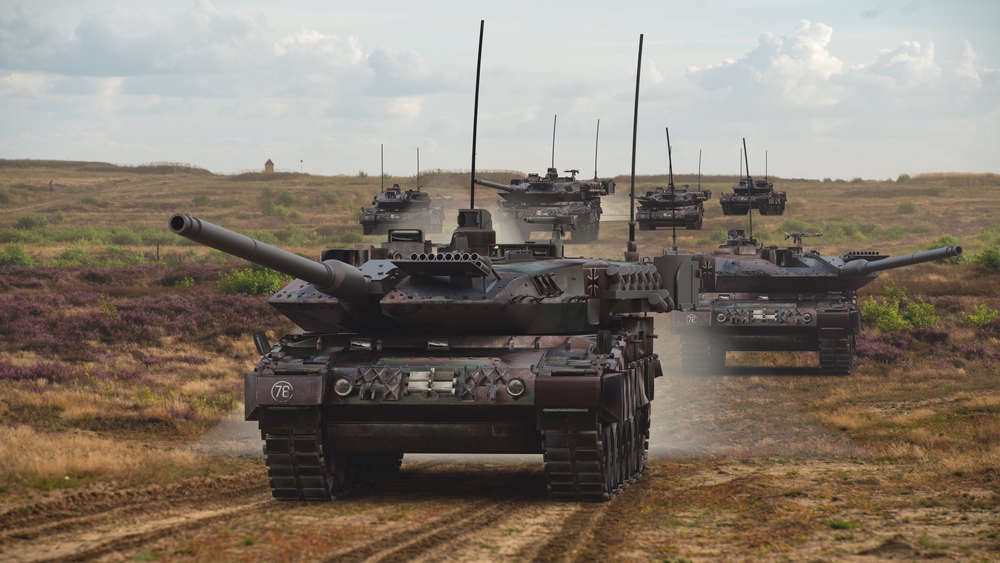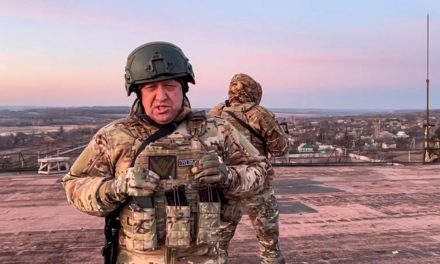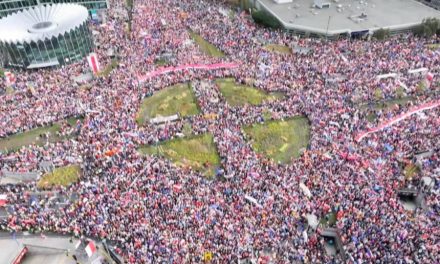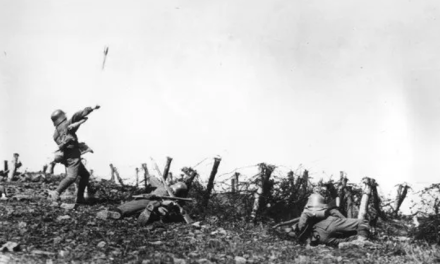So the Ukrainian offensive has begun. The launch of the offensive happened (?) to coincide with the anniversary of the Normandy landings. Then as now, the free world gathered forces to beat back a brutal invader and liberate occupied territories. Then as now, the attacking forces obeyed a brutal dictator who locked up domestic critics in camps and prisons. The list of parables could have been even longer.
There are also significant differences. The first and most important is that today only Ukrainian soldiers are fighting at the front. Other countries have sent their weapons and equipment, have helped train Ukrainians and share vital intelligence but have not sent any forces there.
In a sense, the war is reminiscent of the initial phase of the Second World War when, in September 1939, the Poles had to face the aggressors alone with strong but only moral support from their allies in the West. Unlike today’s Ukrainians, Poles were beaten before any arms shipments could reach the country.
Today, it is the Ukrainian Citizen Army ZSU (Ukrainian: ЗСУ) that is fighting against the Russian invaders. Foreign soldiers are here only as volunteers.
And now the long-awaited Ukrainian offensive has begun. Many observers believe that it is Ukraine’s only chance to defeat the invading Russian army and liberate the country in whole or in part. Public opinion in the West is slowly but surely getting tired of the war. More voices are being raised asking for peace negotiations. Next year there are elections in the United States and the sitting president would certainly prefer not to have to deal with an ongoing conflict with American weapons in Ukraine. Also waiting in the starting pits is the very stable genius, Trump, who has already declared that he would end the war in one day. Probably by calling Putin and promising to stop all aid to Ukraine.
For Ukrainians, it is now or never. Therefore, they have been very careful to prepare as well as possible, not to start too early and swamp their chances. The bloody battles in Bachmut were obviously intended to buy as much time for preparations as possible.
How will the Ukrainian offensive develop? Will they succeed in forcing the Russians into an incredibly difficult maneuver war? Can Ukraine knock out the Russian forces in the country?
Will Crimea be cut off? Maybe outright occupy the peninsula? Take back the occupied territories around Donetsk and Luhansk?
There are a lot of questions, no one, literally no one knows the answer. Not yet at least.
What we can do at this point is only guess and speculate. So I’m going to try a guess based on information currently available in the media. I will start from an article of today’s (6/6 2023) La Repubblica, E il D-Day di Zelensky.
In the article, incoming data and Ukrainian advances are analyzed in several places along the more than 1,000 kilometer long front. It seems that Ukrainians are testing their way and trying to find weak points in Russian defense lines, ie the same tactics that the Russian side has been using for months. The difference seems to lie in how these trial attacks are carried out.
The Russian attacks were usually poorly planned, and consisted of infantry attacks often lacking coordinated support from other arms. Soldiers were sent forward on foot to a fairly certain death, trying to see where the shots that mowed them down came from, and later striking the sniper’s nest with artillery. It is roughly the same way of warfare that was applied in the Soviet Union during the Second World War. Both then and now it means terrible losses for the own side. Neither then nor now, the management seems to care very much about the losses, as long as these can be compensated with new recruits.
Ukrainians, on the other hand, with their significantly smaller population, are confined to other tactics. Here, hopefully, the western education will come in handy. Ukrainians are trying to organize and lead their forces according to the Western NATO model. Ukrainian trial attacks can instead be designed and carried out as “reconnaissance in force” – a hybrid between attack, reconnaissance and diversionary maneuver.
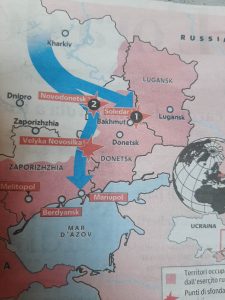
The most intense attacks are reportedly carried out in two directions. One to the east, southeast, in the direction of Soledar, near Bachmut. From there it could continue somewhere between Luhansk and Donetsk. The second direction of attack goes straight south towards Novodonetsk, in the direction of Velika Novosilka and by extension towards Mariupol and the Azov coast.
No significant fighting is reported from other front sections. It seems to be calm at Kherson in the south and east of Kharkiv in the east. A lot of things are happening on the Russian side of the border, at Belgorod but it seems to be a strategic diversion carried out on behalf of the Ukrainians to Russian volunteers fighting the Putin regime.
If the attacks continue in the same directions and succeed in breaking through the Russians’ strong defensive lines, the Ukrainians may have the opportunity to start a war of maneuver. For the Russian side, it could quickly develop into a nightmare scenerio with panic, soldiers fleeing and leaving their positions and combat vehicles and equipment. Just as it looked during the summer outside Kharkiv.
Should the Ukrainians manage to successfully attack along these two lines of direction, they would open up an opportunity to, in a pincer maneuver, lock in significant portions of Russian forces in Ukraine. A disaster reminiscent of von Paul’s army at Stalingrad. Such a disaster would in turn have very serious consequences for Russia’s leadership…
So right now it’s just speculation. There are many challenges and risks for Ukrainians – the depth and strength of Russian fortifications, Russian aviation, which has recently shown a new level of activity, or Russian artillery and rockets that could be used directly against Ukrainian troops instead of being wasted on pointless terrorist bombings of civil targets.
Last but not least, there is also the issue of Ukrainian losses. Both those who have suffered so far and those to come that the intense battles will inevitably reap.
We wait with excitement and hope for the best for Ukraine.
